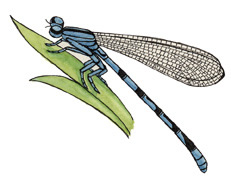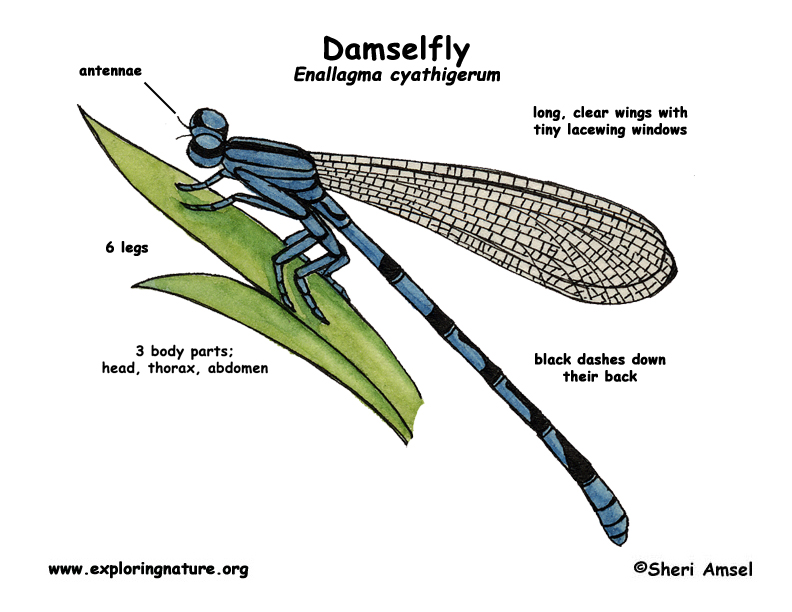


They are found in both Europe and North America. They can be found in the Northern Hemisphere almost all around the globe.
They live near wet areas, along streams and ponds.
They are blue with black dashes down their back. They are smaller than dragonflies.
They rest briefly on water plants with their wings folded back. This is unlike dragonflies that rest with their wings held out flat.
They eat insects.
Females lay their eggs in plants stems near the water line. She can stay underwater to lay her eggs for a while, the male guarding the spot. Most of a damselfly's life is as the young under-water phase (larvae). It can stay in that phase for up to 3 years.Then it climbs up a plant stem out of the water, its outer shell splitting open so the adult damselfly can come out, pump up its wings and fly away. They usually only live as adults for less than 2 weeks, only long enough to mate and lay eggs.
Kingdom: Animalia
Phylum: Arthropoda
Class: Insecta
Order: Odonata
Suborder: Zygoptera
Family: Coenagrionidae
Genus: Enallagma
Species: E. cyathigerum
When you research information you must cite the reference. Citing for websites is different from citing from books, magazines and periodicals. The style of citing shown here is from the MLA Style Citations (Modern Language Association).
When citing a WEBSITE the general format is as follows.
Author Last Name, First Name(s). "Title: Subtitle of Part of Web Page, if appropriate." Title: Subtitle: Section of Page if appropriate. Sponsoring/Publishing Agency, If Given. Additional significant descriptive information. Date of Electronic Publication or other Date, such as Last Updated. Day Month Year of access < URL >.
Amsel, Sheri. "Damselfly" Exploring Nature Educational Resource ©2005-2024. December 14, 2024
< http://www.exploringnature.org/db/view/273 >
